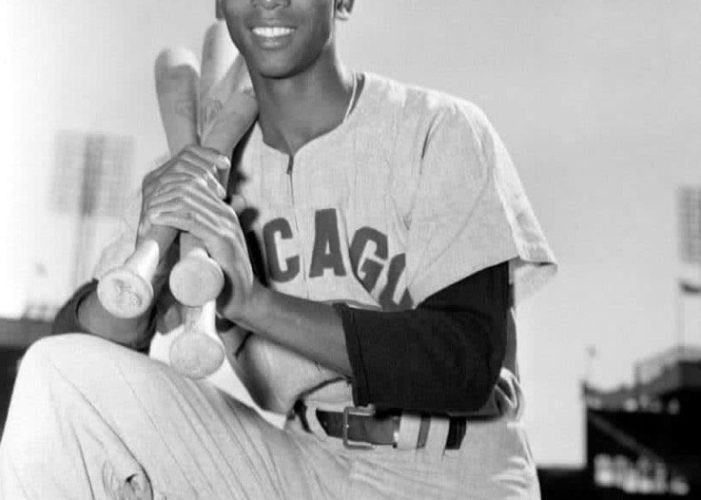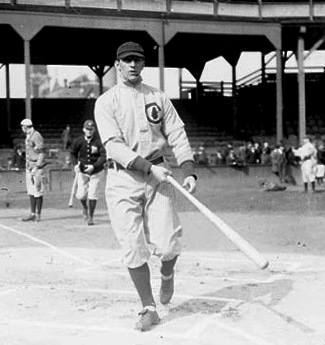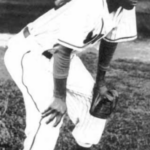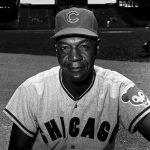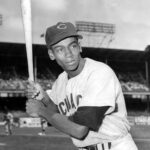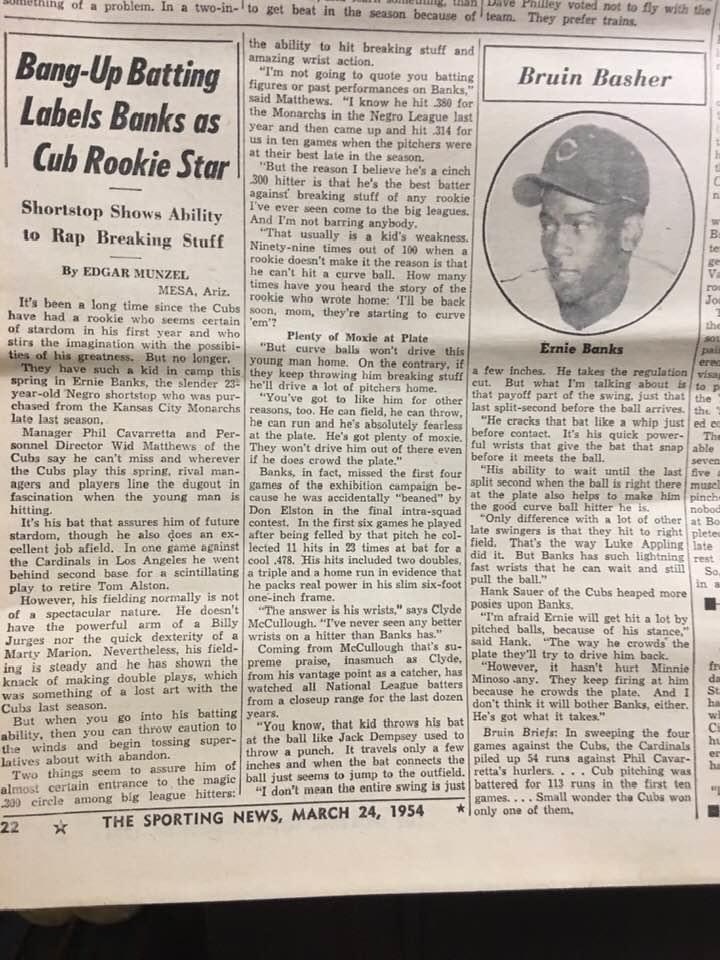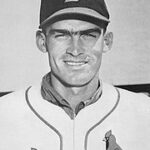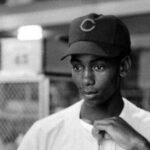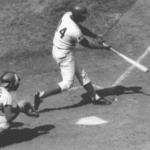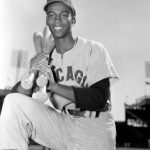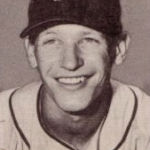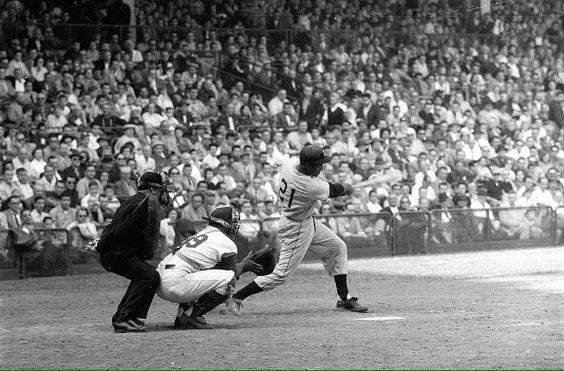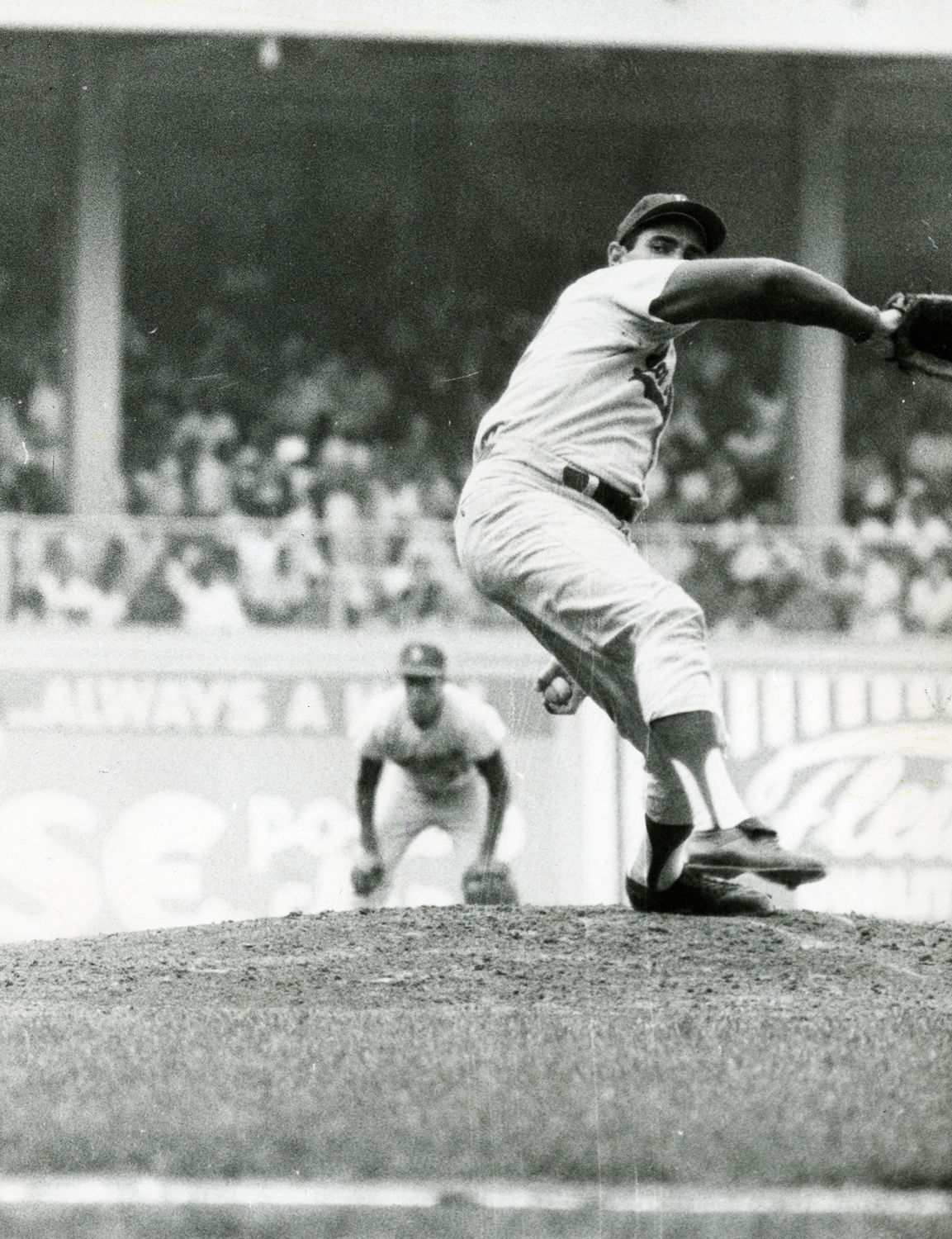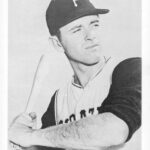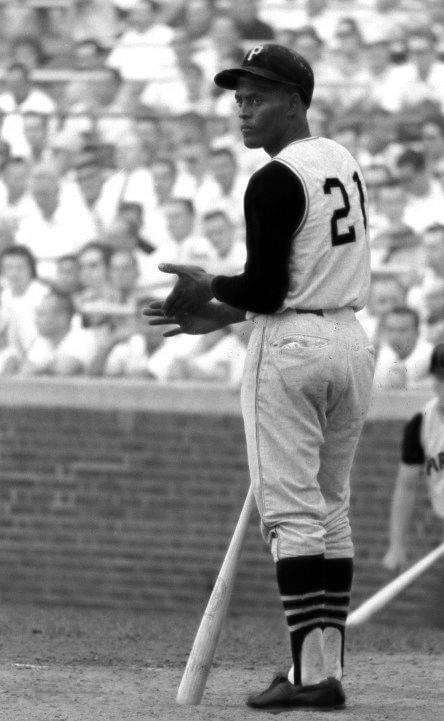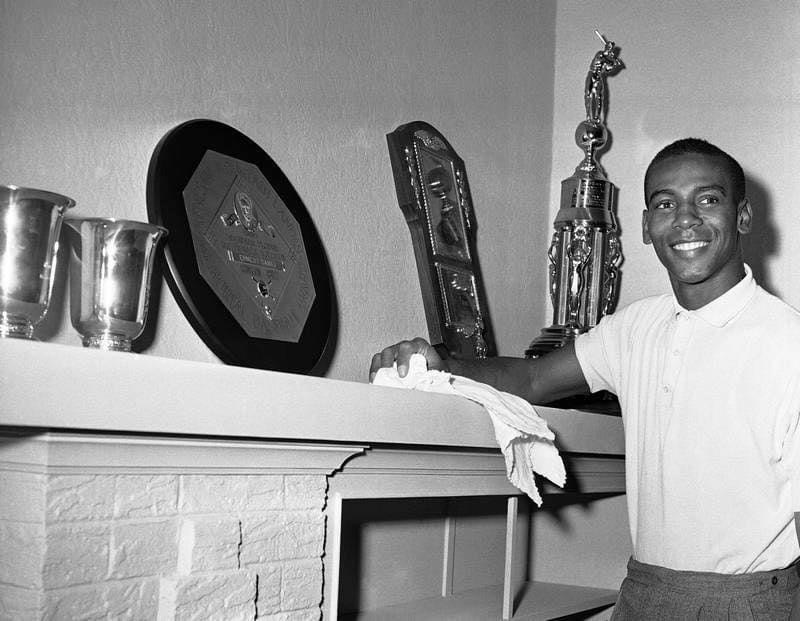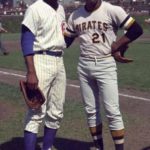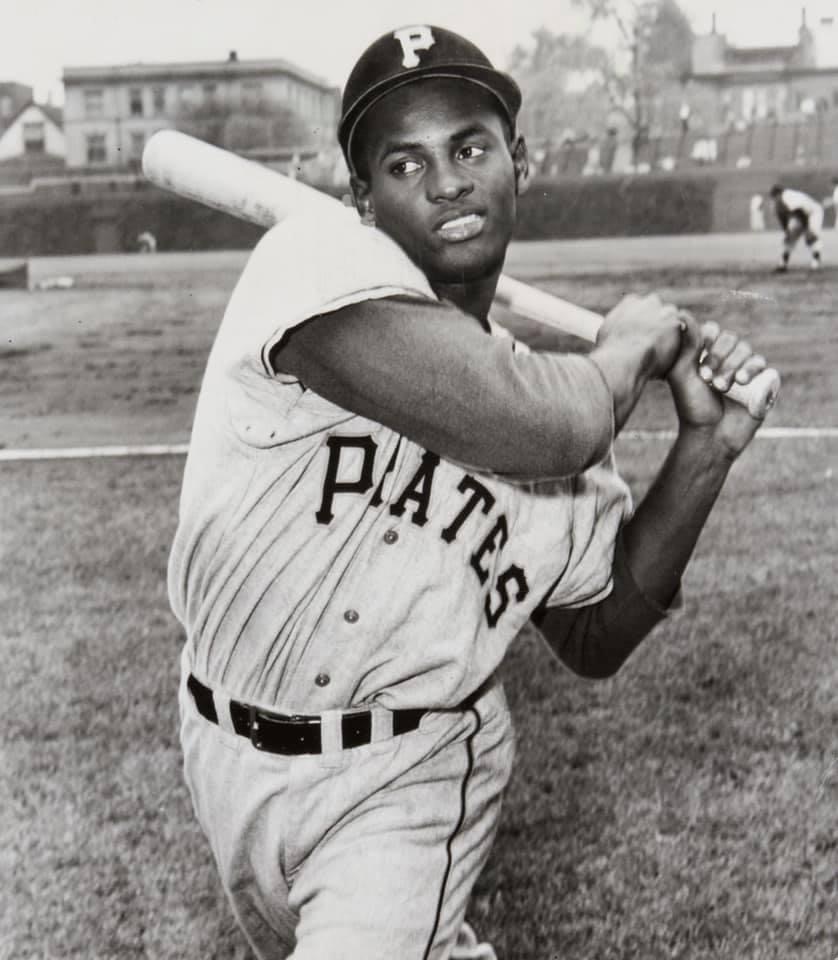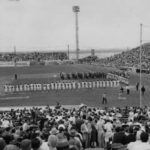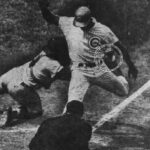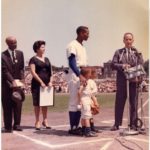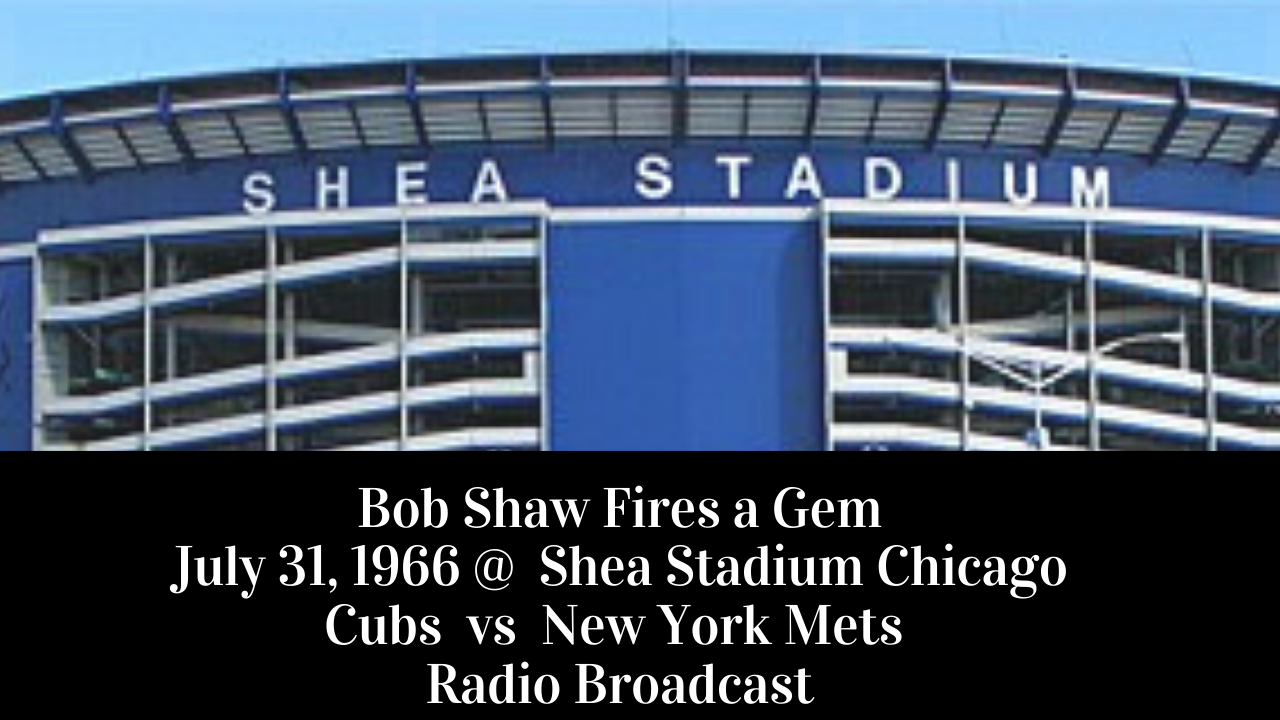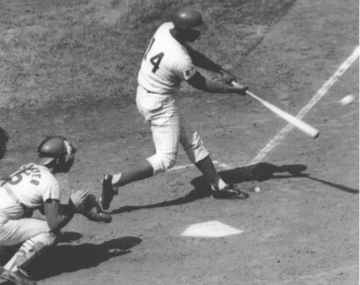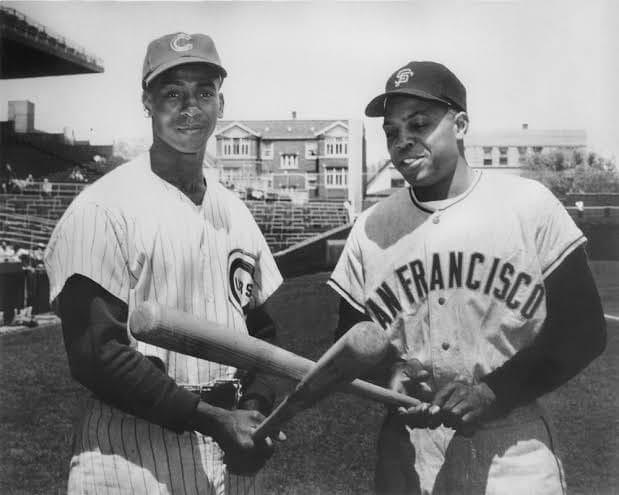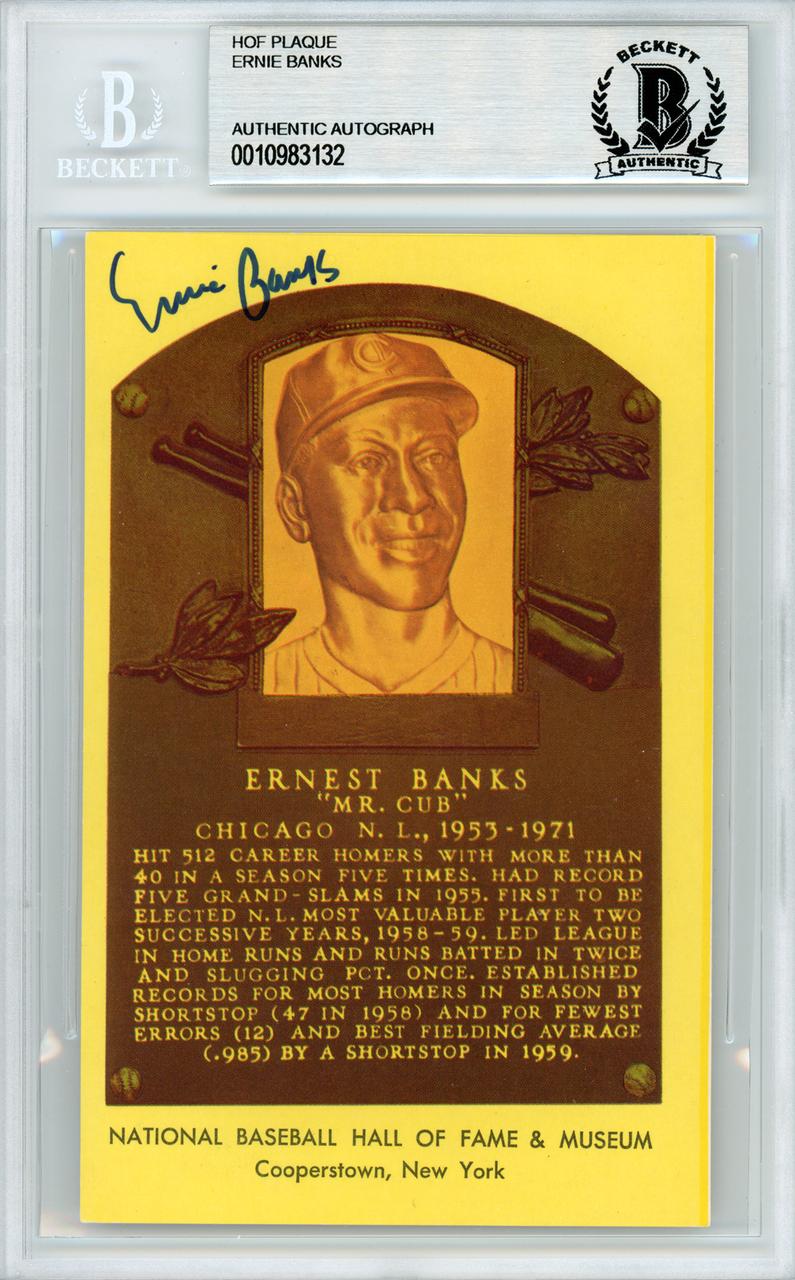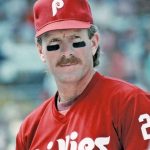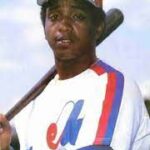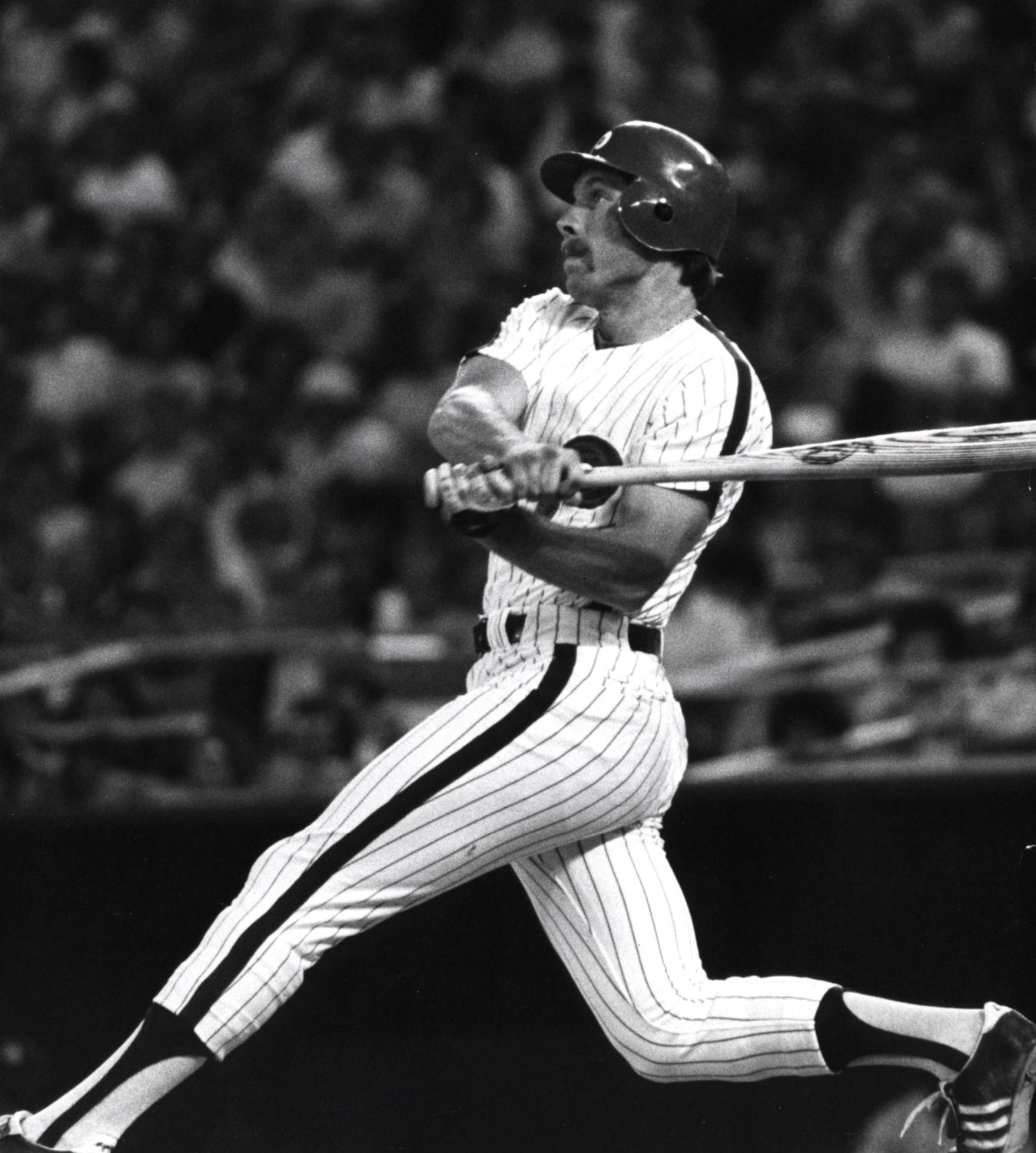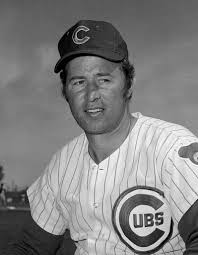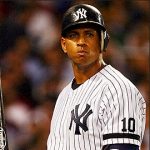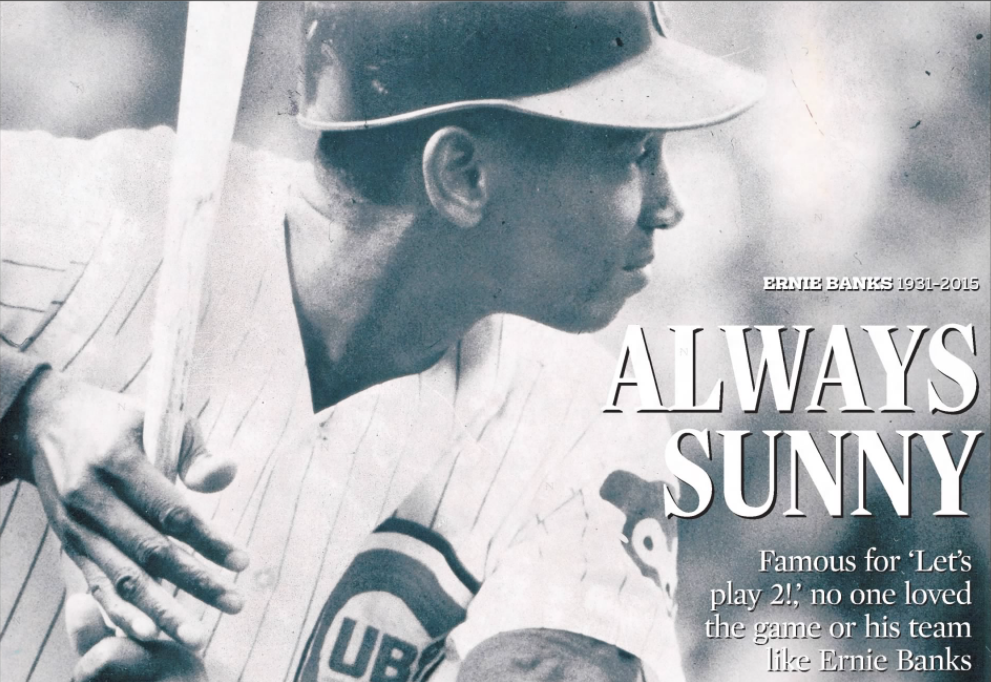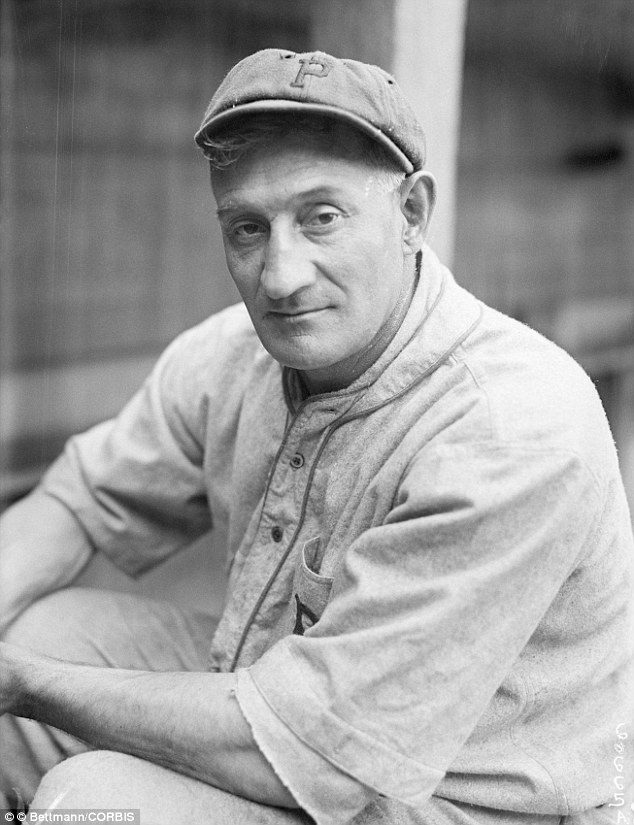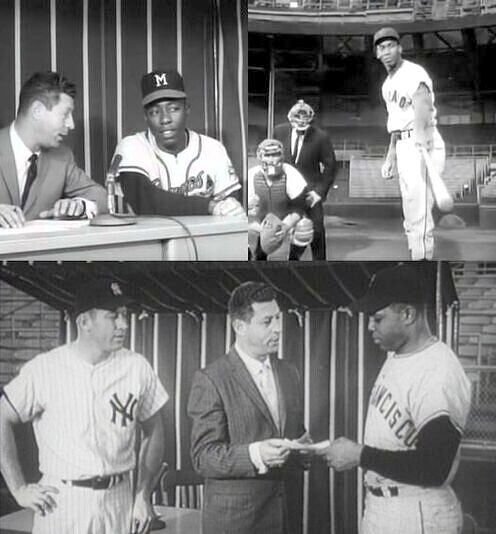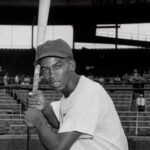Ernie Banks Essentials
Positions: First Baseman and Shortstop
Bats: Right Throws: Right
Height: 6′-1″Weight: 180
Born: January 31, 1931 in Dallas, TX
Died: January 23, 2015 in Chicago, IL USA
Buried: Graceland Cemetery, Chicago, IL
High School: Booker T. Washington HS (Dallas, TX)
Debut: September 17, 1953 vs. PHI 3 AB, 0 H, 0 HR, 0 RBI, 0 SB
Last Game: September 26, 1971 vs. PHI 3 AB, 1 H, 0 HR, 0 RBI, 0 SB
Hall of Fame: Inducted as a Player in 1977 by BBWAA (Voted by BBWAA on 321/383 ballots)
Full Name: Ernest Banks
Nicknames: Mr. Cub
Nine Players Who Debuted in 1953
Al Kaline
Ernie Banks
Junior Gilliam
Roy Face
Don Larsen
Johnny Podres
Bob Buhl
Bobo Holloman
Bill Bruton
All-Time Teammate Team
Coming Soon
Notable Events and Chronology for Ernie Banks Career
Known for his sunny disposition and perpetual love of the game of baseball, Ernie Banks remains, almost 40 years after his retirement, the most popular player in Chicago Cubs history. Known simply as Mr. Cub, Banks spent his entire 19-year major-league career with the Cubs, establishing himself in the process as the franchise’s all-time leader in home runs (512), extra-base hits (1,009), games played (2,528), at-bats (9,421), and total bases (4,706). Banks excelled his entire time in Chicago despite playing for a team that rarely contended for the National League pennant. In fact, no one else in baseball history played in as many games without making a single postseason appearance. Nevertheless, Banks won two National League Most Valuable Player Awards, was named to 11 All-Star teams, and hit more home runs than any other player in the game from 1955 to 1960. Through it all, the Hall of Famer remained one of the sport’s great ambassadors, revealing his love of the national pastime with his famous catch-phrase, “It’s a great day for a ball game; let’s play two!”
Born in Dallas, Texas on January 31, 1931, Ernest Banks displayed little interest in baseball during his formative years. Before developing a fondness for the game as a teenager, Banks had to be bribed with nickels and dimes by his father to play catch. However, by the time he attended Booker T. Washington High School in Dallas, Banks not only excelled in baseball, but he also starred in football, basketball, and track.
Banks’ skills on the diamond were such that he signed on to play with a Negro barnstorming team for $15 a game at the age of 17. Negro League legend Cool Papa Bell subsequently signed him for the Kansas City Monarchs, and Banks played one season with Kansas City before spending the next two years in the army. Banks returned to the Monarchs in 1951 and remained with the team until the Chicago Cubs discovered him during the 1953 campaign. Taking note of Banks’ outstanding all-around ability, the Cubs immediately placed the 22-year-old shortstop on their major league roster, making him the first black player in team history. Banks spent the season’s final two weeks with the club, batting .314 and hitting his first two big league home runs.
Banks earned the Cubs starting shortstop job the following year, appearing in all of the team’s games for the first of six times in his first seven seasons. Although he performed somewhat erratically in the field, committing a total of 34 errors, Banks had a solid rookie year, hitting 19 home runs, driving in 79 runs, and batting .275. He developed into one of the league’s most formidable batsmen in his second full season, hitting 44 home runs, knocking in 117 runs, scoring 98 others, and batting .295. Banks hit five grand slam home runs during that 1955 campaign, establishing in the process a single-season record that stood for over 30 years.
A fractured hand brought Banks’ streak of 424 consecutive games played to an end in 1956, limiting the slugging shortstop’s totals to 28 home runs and 85 runs batted in. However, he began a new streak the following year, playing in every Cubs game for the first of four consecutive times. Over the course of those four seasons, Banks not only displayed his tremendous durability, but he also established himself as one of baseball’s most dominant players. Banks surpassed 40 home runs and 100 RBIs each year, topped 100 runs scored and batted over .300 twice each, and won two league MVP Awards.
He captured the honor for the first time in 1958, after leading the senior circuit with 47 homers and 129 runs batted in, while also finishing among the league leaders with a .313 batting average and 119 runs scored. Banks won his second straight Most Valuable Player Award in 1959, when he hit 45 home runs, scored 97 runs, batted .304, and led the major leagues with 143 runs batted in. Banks performed at such a high level that he captured league MVP honors even though the Cubs finished well out of contention both years. In addition to posting huge offensive numbers, Banks worked diligently on improving his defense, committing a total of only 12 errors in 1959 – the fewest of any National League shortstop.
Banks did not present a particularly imposing figure at the plate. Standing 6’1″ and weighing less than 190 pounds, he wasn’t especially large or muscular. However, he had powerful thighs and tremendously quick and strong wrists. An opposing player once noted that Banks often “hits the ball right out of the catcher’s mitt.”
Bill Furlong further elaborated on the primary source of Banks’ hitting prowess, stating in Baseball Stars of 1959, “His wrists are the secret of Banks’ success. Instead of taking the big Ruthian type swing of the lively ball era, he swings his bat as if it were a buggy whip, striking at the ball with the reflexive swiftness of a serpent’s tongue.”
After winning back-to-back MVP Awards, Banks continued his outstanding hitting in 1960, leading the National League with 41 home runs, and finishing among the leaders with 117 runs batted in and 94 runs scored. He also earned the only Gold Glove of his career that year by leading all N.L. shortstops in both putouts and assists.
Even though Banks played a very solid shortstop his last few years at the position, injuries to his legs reduced his range considerably, prompting the Cubs to shift him to first base in 1962. Banks reacted well to the move, finishing the 1962 campaign with 37 home runs and 104 runs batted in. After suffering through a subpar 1963 season, Banks rebounded the next two years, combining to hit a total of 51 homers and drive in a total of 201 runs. He remained a productive hitter the rest of the decade, surpassing 20 home runs three more times, and knocking in as many as 106 runs in 1969. Banks also developed into a solid defensive first baseman, leading all N.L. first sackers in assists a total of five times.
Nagging injuries and arthritis further weakened Banks’ legs during the latter stages of his career, relegating him to a part-time role his final two seasons. Yet, he experienced one final moment of glory on May 12, 1970, when he stroked his 500th home run over Wrigley’s left field wall. Banks retired at the conclusion of the following campaign having hit more home runs as a shortstop (277) than any other player at the position. In addition to his career total of 512 home runs, he knocked in 1,636 runs, scored 1,305 others, accumulated 2,583 hits, and compiled a lifetime .274 batting average. Banks surpassed 40 homers five times, 100 runs batted in eight times, and 100 runs scored twice. He led the National League in home runs and RBIs two times each, and he topped the circuit in slugging percentage and total bases once each. In addition to winning two MVP Awards, he finished in the top five in the balloting on two other occasions.
After retiring as an active player, Banks became a coach for the Cubs, serving in that capacity the next three years, before finally leaving the game he loved so much. The members of the BBWAA elected him to the Hall of Fame shortly thereafter, voting him into Cooperstown in 1977, his first year of eligibility. Although Banks has remained away from baseball in an official capacity ever since, he continues to serve the national pastime well, reminding fans everywhere how privileged he considered himself to be to
be able to spend much of his life playing a boys’ game.
Summarizing the attitude Banks took with him to the field every day, Joe Mantegna wrote, “He never complained about his team’s bad luck or bad talent, never stopped playing the game with joy, never stopped giving his all, never lost his proud demeanor, and never acted like anything but a winner. He was a symbol of the Cub fan’s undiminishing resilience. If he could be happy to come to the park each afternoon, then so could we.”
Factoids, Quotes, Milestones and Odd Facts
• Banks became the first player in Cubs history to have his number retired, when his No. 14 was set aside in 1982.
• Banks is one of eight professional baseball players to be awarded the Presidential Medal of Freedom, the highest civilian award in the U.S. He received the honor from President Barack Obama in 2013.
• When Banks debuted on Sept. 17, 1953, he became the first African-American player in Cubs history.
• Banks is the Cubs’ all-time leader in games played (2,528), at-bats (9,421), home runs (512), total bases (4,706) and extra-base hits (1,009).
Video: Ernie Banks receives Medal of Freedom
• Though known as a shortstop, Banks actually played fewer games there (1,125) than at first base (1,259). He also played 69 games at third base and 23 in left field.
• Banks led the league in games played six times during a seven-year period from 1954-60, appearing in 1,068 out of a possible 1,086 Cubs games over that span.
• From Aug. 28, 1956, through June 22, 1961, Banks played in 717 consecutive games, the 15th-longest streak in Major League history.Mr. Cub Ernie Banks dies at 83
• Banks won NL MVP honors in 1958 and ’59, becoming the first player in history to take that award in consecutive seasons. He did so despite the Cubs finishing with a losing record both times, at a combined 146-162.
• Banks’ five grand slams in 1955 set a single-season record that stood until ’87.
• Until Alex Rodriguez came along, Banks owned the five highest single-season home run totals for a shortstop, including a record 47 in 1958.
• His 143 RBIs in 1959 stand as the fourth-highest single-season total for a shortstop, with only Miguel Tejada topping that number since. Meanwhile, his .614 slugging percentage in ’58 also ranks fourth, behind only Rodriguez.
• Even though he didn’t debut until 1953, Banks’ 228 home runs during the 50s was 112 more than any other shortstop. He also led all shortstops that decade with 661 RBIs and 42.4 wins above replacement (WAR).
• According to Baseball-Reference.com, all shortstops since 1901 have combined for 13 seasons of 9.4 WAR or more. Banks accounts for two of those, in 1958 (9.4) and ’59 (10.2, sixth all-time).
• Banks’ 277 home runs as a shortstop are a National League record.
• After his playing career, Banks became the first African-American to manage in the Major Leagues on May 8, 1973, when, as a coach, he took over for ejected manager Whitey Lockman during extra innings of a 3-2 win over the Padres in San Diego.
• Through no fault of his own, Banks never got to participate in the postseason, as the Cubs experienced a drought between 1945 and ’84. During Banks’ 19 seasons, Chicago finished above the .500 mark only six times.
Video: Ernie Banks is inducted into Baseball Hall of Fame
• Banks was elected to the Hall of Fame in his first year of eligibility in 1977. In ’99, he was one of three shortstops named to Major League Baseball’s All-Century team, joining Honus Wagner and Cal Ripken Jr.
• Banks’ 2,528 games are the 11th most in history for a player who spent his entire career with only one team.
• In his 19 seasons with the Cubs, they finished higher than fifth place in only his final five seasons, never winning a pennant or division championship. His 2,528 games are the most by anyone who never participated in postseason play.
Other Resources & Links
Coming Soon
If you would like to add a link or add information for player pages, please contact us here.

